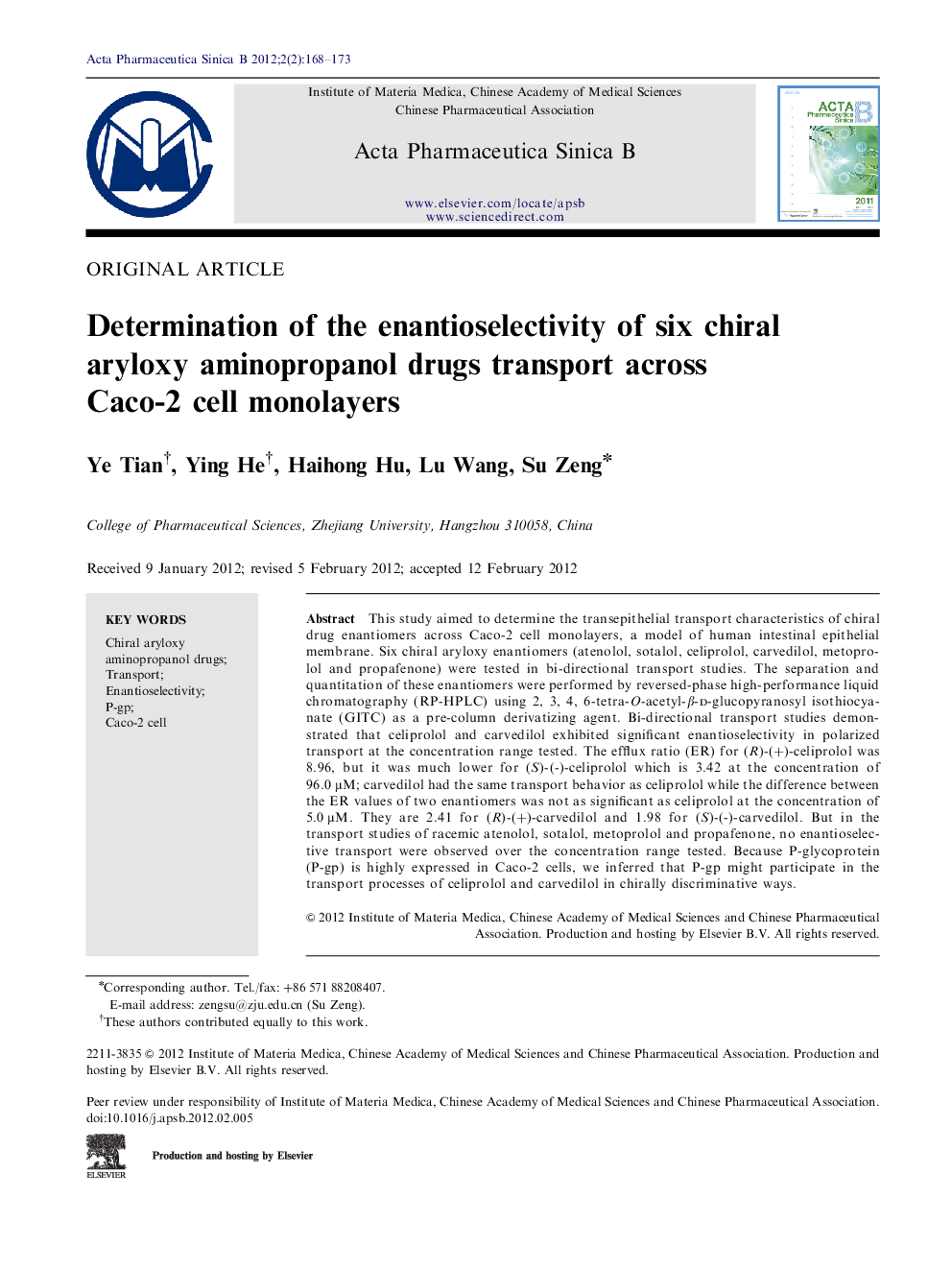| Article ID | Journal | Published Year | Pages | File Type |
|---|---|---|---|---|
| 2474720 | Acta Pharmaceutica Sinica B | 2012 | 6 Pages |
This study aimed to determine the transepithelial transport characteristics of chiral drug enantiomers across Caco-2 cell monolayers, a model of human intestinal epithelial membrane. Six chiral aryloxy enantiomers (atenolol, sotalol, celiprolol, carvedilol, metoprolol and propafenone) were tested in bi-directional transport studies. The separation and quantitation of these enantiomers were performed by reversed-phase high-performance liquid chromatography (RP-HPLC) using 2, 3, 4, 6-tetra-O-acetyl-β-d-glucopyranosyl isothiocyanate (GITC) as a pre-column derivatizing agent. Bi-directional transport studies demonstrated that celiprolol and carvedilol exhibited significant enantioselectivity in polarized transport at the concentration range tested. The efflux ratio (ER) for (R)-(+)-celiprolol was 8.96, but it was much lower for (S)-(-)-celiprolol which is 3.42 at the concentration of 96.0 μM; carvedilol had the same transport behavior as celiprolol while the difference between the ER values of two enantiomers was not as significant as celiprolol at the concentration of 5.0 μM. They are 2.41 for (R)-(+)-carvedilol and 1.98 for (S)-(-)-carvedilol. But in the transport studies of racemic atenolol, sotalol, metoprolol and propafenone, no enantioselective transport were observed over the concentration range tested. Because P-glycoprotein (P-gp) is highly expressed in Caco-2 cells, we inferred that P-gp might participate in the transport processes of celiprolol and carvedilol in chirally discriminative ways.
Graphical abstractThe enantioselectivity of six chiral aryloxy aminopropanol drugs, atenolol, sotalol, celiprolol, carvedilol, metoprolol and propafenone, was studied in vitro by bi-directional transport Caco-2 cell model.Figure optionsDownload full-size imageDownload as PowerPoint slide
